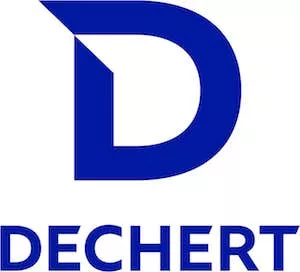- within Antitrust/Competition Law, Consumer Protection and Tax topic(s)
- with readers working within the Banking & Credit industries
Key Takeaways
- Over the past decade, the litigation funding market in England has grown significantly, enabling mass tort litigation and multi-claimant litigation, such as competition and Environmental, Social, and Governance ("ESG") impact claims, on an unprecedented scale.
- The July 2023 PACCAR decision by the UK Supreme Court, which deemed many litigation funding agreements unenforceable, posed a significant challenge to the industry, but subsequent court decisions and proposed legislation indicate the desire of some to find a viable path forward for litigation funding. Additionally, litigation funders have sought to structure (or restructure) their existing arrangements to take into account the findings in the PACCAR decision.
- Despite the uncertainty, the Civil Justice Council's ongoing review and large-scale investments from funders to claimant firms highlight the continued expansion of litigation funding in England.
- With the 2024 European Union Product Liability Directive taking effect by the end of 2026, Europe may also see further growth in its litigation funding market.
Dechert has been following recent developments in English law that are attracting mass tort and multi-claimant litigation.1 In the United States, complex, large-scale, and long-running mass actions dominate court dockets across the country. Litigation funding arrangements often enable actions of this magnitude. These agreements are commonplace in the U.S. and a hallmark of U.S. mass litigation.
While historically less common in England,2 the emergence and subsequent exponential growth of the litigation funding industry over the last decade have facilitated group litigation on a new scale. That trend has only continued over the last two years—despite some recent uncertainty.
In the litigation funding market in England and Wales, assets have risen from £198 million in 2011/12 to £2.2 billion in 2022—a tenfold increase over a decade.3 The UK litigation funding market is now among the largest globally.4
This growth has persisted despite the legal restrictions on the litigation funding regime, discussed below, and roadblocks to mechanisms for bringing claims, discussed in our prior publications.5 Claimant lawyers have sought alternative ways to structure their funding agreements and pursue their mass claims.
PACCAR Decision and Aftermath
In July 2023, in the PACCAR case, the UK Supreme Court held that litigation funding agreements ("LFAs") that calculate funder return as a percentage of damages are likely unenforceable damages-based agreements ("DBAs").6 In England, legislation restricts the use of DBAs, which are defined as agreements that provide advocacy services, litigation services, or claims management services where the funder's payment is calculated by reference to the amount obtained by the claimant if the claimant is successful (i.e., as a portion of damages similar to a contingency fee agreement in the United States).7 The Supreme Court in PACCAR considered whether the LFAs at issue fell into the definition of DBAs and were therefore subject to such regulations, and found that they were. The decision was seen as a significant blow to the future of litigation funding, and it left many existing agreements at potential risk. In a dissenting opinion, Lady Rose explained that the decision was likely to "invalidate most if not all LFAs that ha[d] been agreed since litigation funding began."8
Subsequent court decisions, however, indicate a willingness to work around PACCAR with funder-friendly decisions, and funders have sought to restructure or recast funding agreements to attempt to avoid the concerns raised in PACCAR. Soon after PACCAR, the Competition Appeal Tribunal ("CAT") upheld LFAs in the face of challenges, even where the funder's return could be calculated with reference to damages.9 For example, in Alex Neill, the CAT found a LFA enforceable where it had been revised in light of PACCAR.10 Under the revised LFA, the funder's return was calculated as the greater of: (1) a fixed fee calculated as a multiple of the capital committed to the litigation; or (2) a percentage of damages in the litigation.11 However, unlike the pre-PACCAR LFA, the percentage of damages calculation was made conditional on the mechanism being enforceable and permitted by applicable law.12
Recognising the critical role that third-party funding plays in ensuring access to justice, in March 2024, Rishi Sunak's Conservative Government introduced the Litigation Funding Agreements (Enforceability) Bill (the "LFA Enforceability Bill") in the House of Lords. Its stated purpose was to restore the position to that which prevailed before the Supreme Court's ruling in PACCAR such that LFAs were not DBAs and would be enforceable.13 The bill continued to progress through the House of Lords; however, it failed to pass before the July 2024 general election. The incoming Labour government has yet to revive the LFA Enforceability Bill but has indicated that it will "take a more comprehensive view of any legislation to address issues in the round once [the Civil Justice Council's] review is concluded."14Thus, the bill is unlikely to be revived before the Autumn of 2025.
The CAT also recently certified a class action against Google over allegedly anticompetitive app store practices, despite objections from the defence about the LFA.15 The CAT allowed the case to proceed subject to certain revisions to the funding agreement that would be spelled out in the court's forthcoming order.
Civil Justice Council Review of Litigation Funding
The Civil Justice Council ("CJC")—an advisory body tasked with advising the Lord Chancellor, the Judiciary, and the Civil Procedure Rule Committee in England and Wales—is also weighing in on the litigation funding debate. In October 2024, the CJC published an interim report on litigation funding and promised a final report in the summer of 2025.16 The interim report surveyed the history of litigation funding in England and Wales, its benefits and challenges, and potential approaches to regulation.17 It noted that while litigation funding may increase access to justice, there are concerns it could lead to under-compensation for funded parties, promote "frivolous, vexatious and/or unmeritorious litigation," create risks that funders could control litigation, and discourage or undermine just settlement.18 The CJC refrained from making any recommendations in the interim report, but noted that the full report will make recommendations where necessary.19 The CJC extended the deadline for submissions for its review by one month, and closed its consultation on March 3, 2025, but still expects to produce its final report in the summer of 2025.20
The Future of Litigation Funding in England
Though proposed legislation overturning it has not been revived and the CJC has yet to formally weigh in, the restricting of litigation funding under PACCAR appears to be short lived. In the meantime, litigation funding is being used to finance group litigation on a scale not seen before in England, and litigation funders are more active than ever.
Litigation funders and claimants' firms are also teaming up in novel ways. One newly formed company, for example, combines a law firm, litigation funder, insurance managing general agent, and a mass tort and group action claim acquisition company into one group. This first-of-its-kind company provides a one-stop shop for bringing U.S.-style mass tort claims in England.21 This structure signals the active role litigation funders in England intend to play when they invest in litigation, and would appear not to be permitted in the United States, where the general rule is that only licensed attorneys can own law firms.22
Even outside of these novel corporate structures, litigation funders are actively involved in at least some of the cases they invest in. While they typically remain in the shadows (similar to their approach in U.S. litigation), they have publicly involved themselves in some recent cases. For example, in the Merricks v Mastercard litigation, the funder Innsworth Capital intervened to object to the proposed Merricks settlement, contending the £200 million settlement was far below the claim's £10 billion valuation, and arguing, among other things, that Innsworth did not consent to the settlement amount.23 Despite this objection, the CAT approved the settlement in February 2025.24 Defendants may see this as a sign that they have more leverage to negotiate directly with claimants than their funders.
Litigation Funding Horizons in Europe
England is not the only legal market that can expect to see growth in litigation funding. The new EU Product Liability Directive came into effect in 2024 and must be implemented into the national laws of EU Member States by December 2026. The Directive eases the burden on product liability plaintiffs in numerous ways, including a rebuttable presumption of defectiveness or causation in certain circumstances, which may encourage mass tort filings in the European Union.25
Litigation funding practices have also been an area of interest in the European Union. For example, in 2024, the European Law Institute ("ELI") issued a report on litigation funding best practices.26 As the ELI observed in its report, litigation funding is expected to play a growing role in the EU.
Conclusion
The litigation funding landscape in England continues to evolve rapidly, driven by significant market growth and ongoing legal developments. Despite potential roadblocks such as the PACCAR decision, the industry has shown persistence through judicial and legislative actions. An active litigation funding market in England appears to be the new normal and may further fuel the growth of England's burgeoning multi-claimant regime.
Footnotes
1 https://www.dechert.com/knowledge/onpoint/2023/2/recent-english-law-developments-invite-mass-tort-and-other-multi.html; https://www.dechert.com/knowledge/onpoint/2025/2/representative-claims--a-game-of-two-halves-.html/1742227716823; https://www.dechert.com/knowledge/onpoint/2025/2/evolving-mechanisms-for-multi-claimant-actions-in-england-have-l.html.
2 Arising from English law's historic restrictions on arrangements that could be considered to involve "maintenance" or "champerty."
3 Glyn Rees, The Third Party Litigation Funding Law Review, United Kingdom – England and Wales Report (Simon Latham ed., 6th ed. 2022).
4 David Walker, In-Depth: Third Party Litigation Funding Review, United Kingdom – England and Wales Report (Erik Bomans ed., Lexology, 8th ed. 2024).
5 https://www.dechert.com/knowledge/onpoint/2025/2/representative-claims--a-game-of-two-halves-.html/1742227716823; https://www.dechert.com/knowledge/onpoint/2025/2/evolving-mechanisms-for-multi-claimant-actions-in-england-have-l.html.
6 R (on the application of PACCAR Inc and others) (Appellants) v Competition Appeal Tribunal and others (Respondents) [2023] UKSC 28.
7 See CLSA § 58AA, The Damages Based Agreements Regulations 2013 (SI 2013/609).
8 R (on the application of PACCAR Inc and others) (Appellants) v Competition Appeal Tribunal and others (Respondents) [2023] UKSC 28.
9 See, e.g., Mark McLaren Class Representatives Ltd v MOL (Europe Africa) Ltd and others [2024] CAT 10; BSV Claims Ltd v Bittylicious Ltd [2024] CAT 48.
10 Alex Neill Class Representative Ltd v Sony Interactive Entertainment Europe Ltd & Anor [2023] CAT 73. The CAT's decision in Alex Neill has been appealed to the Court of Appeal, and a hearing is set for June 10, 2025.
11 Id.
12 Id.
13 Litigation Funding Agreements (Enforceability) Bill [HL] Explanatory Notes, ¶1, https://bills.parliament.uk/publications/54764/documents/4594.
14 Answer given by Lord Ponsonby of Shulbrede to the question of whether the Labour Government planned to reintroduce the LFA Enforceability Bill. https://questions-statements.parliament.uk/written-questions/detail/2024-07-29/hl449.
15 Professor Barry Rodger v Alphabet Inc and others, Case No. 1673/7/7/24.
16 Civil Justice Council, Review of Litigation Funding: Interim Report and Consultation (Oct. 31, 2024), https://www.judiciary.uk/wp-content/uploads/2024/10/CJC-Review-of-Litigation-Funding-Interim-Report.pdf.
17 Id.
18 Id.
19 Courts & Tribunals Judiciary, Litigation Funding: Civil Justice Council review of litigation funding, https://www.judiciary.uk/related-offices-and-bodies/advisory-bodies/cjc/current-work/third-party-funding/.
20 Id.
21 Legatus Holdings Limited, https://legatusholdings.co.uk/.
22 The American Bar Association's Model Rule of Professional Conduct 5.4 (Professional Independence of a Lawyer) bars law firms from sharing ownership or other financial interest with non-lawyers.
23 [2025] CAT 7.
24 Transcript of Settlement Hearing (Day 3), Merricks v Mastercard, 1266/7/7/16.
25 Directive (EU) 2024/2853 of the European Parliament and of the Council of 23 October 2024 on liability for defective products and repealing Council Directive 85/374/EEC.
26 Practices Governing the Third Party Funding of Litigation, European Law Instituted (2024), https://www.europeanlawinstitute.eu/fileadmin/user_upload/p_eli/Publications/ELI_Principles_Governing_the_Third_Party_Funding_of_Litigation.pdf.
The content of this article is intended to provide a general guide to the subject matter. Specialist advice should be sought about your specific circumstances.







